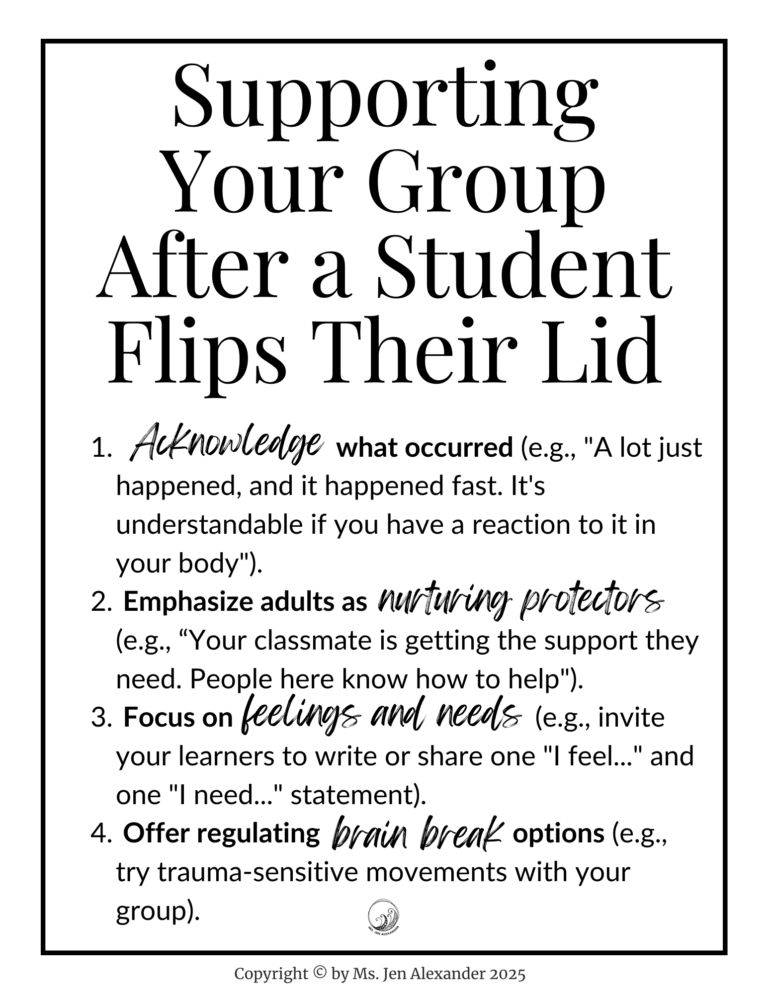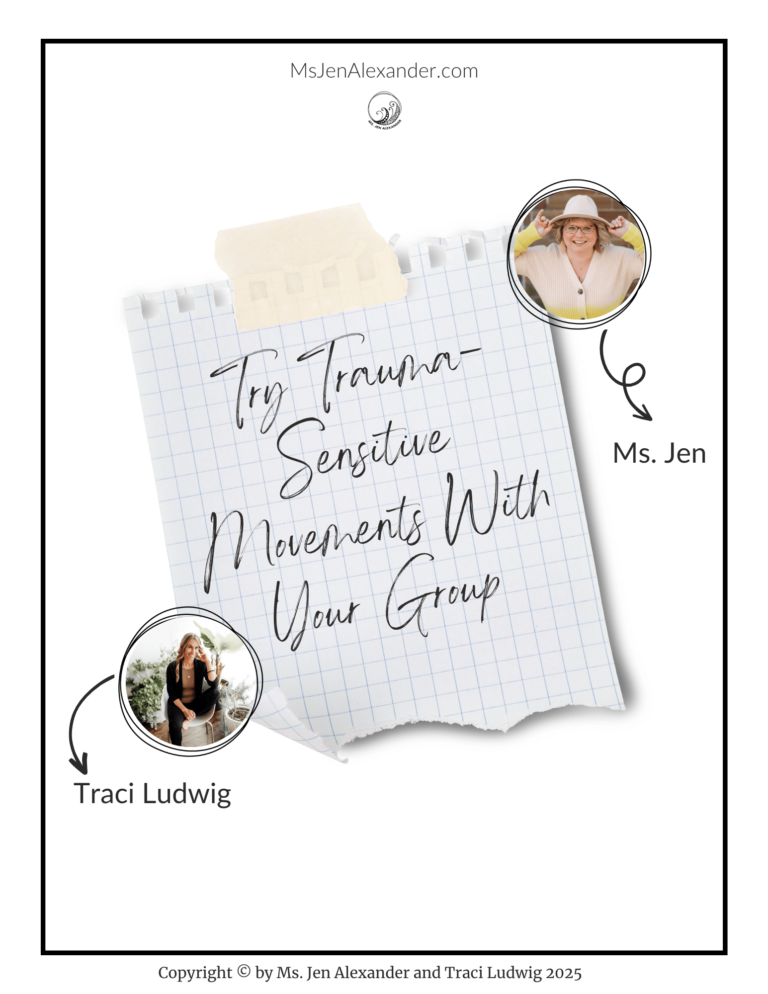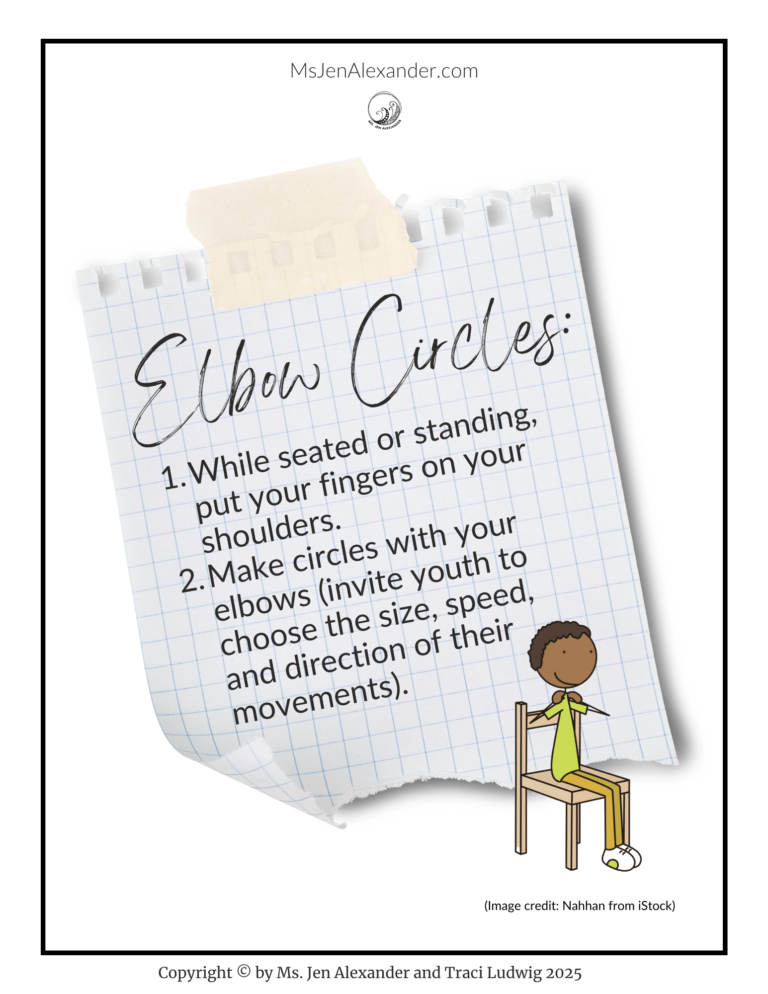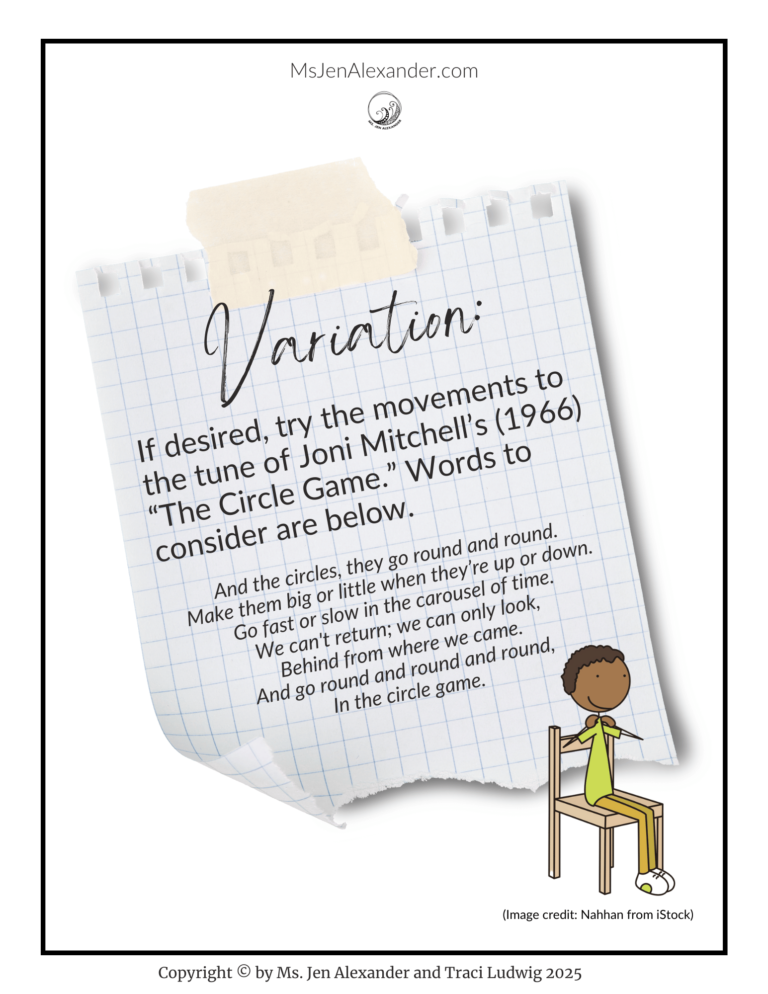Trauma-sensitive practices improve regulation for classrooms and schools. Still, youth will escalate sometimes. In this post, Ms. Jen shares a classroom sequence that can help everyone get regulated and ready to learn after a student flips their lid.
Even if you’ve taught your students about brain states, you’re using hand signals to communicate about these states in your room, and you offer co-regulation when youth need it, individuals can still become overwhelmed. They can engage in aggression, tear up your classroom, or flee, necessitating calls for support or room clears. Follow your board, district, or building’s plan(s) as you manage these crises. Understand that what you do afterwards matters too.
Have you ever wondered about questions like these?
- Do we simply move on after a classroom escalation?
- If not, how do I communicate about what happened without breaking confidentiality?
- If we discuss what occurred, what do I say?
- Is there anything else I can do to help students not be traumatized by aggression in the classroom?
- Acknowledge what occurred to help your learners make meaning of the experience.
- Emphasize how adults are nurturing protectors who know how to help and will do so.
- Invite a short discussion or time of reflection related to feelings and needs.
- Offer regulating brain break options as you transition into what’s next.

Step 1: Acknowledge What Occurred
When stressful experiences are confusing, they can be even more overwhelming. Helping youth understand what’s occurring can improve how they regulate through these experiences, lessening traumatic responses. This is why it’s important to acknowledge when big stress occurs in the classroom.
Kids can handle the truth. It’s deception and confusion that make difficult circumstances even harder for children and adolescents to recover from. This doesn’t mean youth always need the entire truth though. Both personal and developmental needs must be considered in how much you explain. Additionally, be mindful of healthy boundaries, maintain confidentiality, and stick to what’s known unless you’re explaining a wondering or guess you have about what youth might need.
Here are a few examples of things you can say once the needs of the dysregulated learner are being tended to (and perhaps while they are not present in the room).
- “Sometimes big feelings lead to big actions. What just happened changed my brain state. It may have affected yours too.”
- “A lot just happened. It happened fast. It’s understandable if you have reactions in your body.”
- “That person experienced their lid flipping, and it may be affecting any of us.”
- “We can care about them, set boundaries, and tend to what we need.”
Kids can handle the truth. It's deception and confusion that make difficult circumstances even harder for children and adolescents to recover from. This doesn't mean youth always need the entire truth though.
Ms. Jen Tweet
Step 2: Emphasize Adults as Nurturing Protectors
As the educator in the room, you can also be an attachment figure for your learners. The way you handle crises, including when youth have flipped their lids, is the most important factor related to re-establishing real and and felt safety with all who are present. When you’re better regulated and can lead your students with truth and confidence, your students will have an opportunity to feel safer again—in connection with you. Overall, strive to be a nurturing protector—someone who’s leading the way, not with rigidity, but as a caring, compassionate caregiver who exemplifies, “I’ve got you.”
Here are some words you might modify to fit your circumstances.
- “Right now, your classmate is getting the support they need. People here know how to help.”
- “I have ideas about how to help you—let’s work together to support one another.”
- “It’s okay for you to access what you need in our classroom, outside of it with another person who works here, and outside of school with other folks too.”
- “We’ll spend a little bit of time focused on what we can do to take good care of ourselves and one another. Then, we’ll get back into the rhythm of our day. Often, that’s helpful for everyone!”
Strive to be a nurturing protector—someone who's leading the way, not with rigidity, but as a caring, compassionate caregiver who exemplifies, "I've got you."
Ms. Jen Tweet
Step 3: Focus on Feelings and Needs
My go-to suggestion in the aftermath of big stress whether it’s a community event, a classroom escalation, or stirred up energy after a conflict at recess, is to invite a focus on feelings and needs. Never force this, but instead, invite learners to participate as little or as much as they want to.
Here are several ways you could do this after a student flips their lid in your classroom; there are many more too!
-
Offer words like these. “Stand up if you’re feeling stirred up inside. Or, stay seated if you’re feeling more shut down. If you’re not sure, show me the thinker’s posture (chin resting on one’s hand or closed fist as in the image at the top of this post).”
-
Circle up and do one round of “I feel…” and another round of “I need…” so that each person can finish the first sentence stem, then the second one. Acknowledge similarities and differences in the group without giving much advice. For example, “Some of us feel bigger energy in our bodies. Others feel less.”
-
Invite your learners to write one “I feel…” and one “I need…” statement on a sticky note or card. Glance at them and acknowledge patterns in the room. “If you’re feeling stirred up, know you’re not alone. Others feel that too.” Or, “It’s not uncommon to feel numb. That’s coming up for some of you.”
- Ask each student to consider showing a partner their brain state—use the hand signals in January’s blog post. They can also ask one another, “Any idea what you might need?” As a larger group, share “I notice…” statements related to patterns of folks’ needs and discuss how you might meet these before moving onto the next part of your day.
My go-to suggestion in the aftermath of big stress whether it's a community event, a classroom escalation, or stirred up energy after a conflict at recess, is to invite a focus on feelings and needs.
Ms. Jen Tweet
Step 4: Offer Regulating Brain Break Options
Finally, offer regulating brain break options for your students. Then transition into the next part of your day.
Here are just a few ideas—you could even do one from each category if your group is especially dysregulated.
- Invite big muscle movement as a way to release stress-induced energy. Think jogging in place, wall or seat push-ups, dancing to a video, or doing one loop of power walking around the school.
- Incorporate trauma-sensitive movements like Elbow Circles in your brain break. Learn more in our February Live titled “So Yoga is Regulating… Now What?” With Ms. Jen. Download a copy of the directions. Then, find even more trauma-sensitive movements from Ms. Jen and Traci Ludwig’s Take Five Approach, which is explained in our new quick guide Trauma-Sensitive Movements for the Classroom: The Take Five Approach to Helping Students Get Regulated.
- Invite students to complete one puzzle or thinking game (e.g., play one round of Tic Tac Toe with a partner, work as a group to fill in one Sudoku puzzle that you project on your white board or screen, play one round of Classroom Balderdash, or read to your kids.
- Finally, remind students how to access more supports in and out of school should they need them now or later. Then transition back into your day by giving clear directions about what’s next.



While trauma-sensitive practices, instruction, interventions, and supports can reduce the number of instances of lid flipping by youth, it doesn’t mean classroom crises will always be prevented. Importantly, there are trauma-sensitive things every educator can do to help re-establish safety for all learners after a period of school escalation—these actions emphasize regulation within a community of relationships and are good for both health and learning.
While trauma-sensitive practices, instruction, interventions, and supports can reduce the number of instances of lid flipping by youth, it doesn't mean classroom crises will always be prevented.
Ms. Jen Tweet
To Learn More...
- Learn about the harms of seclusion and restraints in schools from NAMI.
- Read this article by Emily Deruy (2016) from The Atlantic called Does Mindfulness Really Work in Schools? to better understand the research about mindfulness practice in schools.
- To dive deeper into understanding how mindfulness is not always trauma-informed, read Katrina Schwartz’s (2019) piece Why Mindfulness And Trauma-Informed Teaching Don’t Always Go Together.
- This Q&A with Dr. Angela Rose Black details why voices of color are so important when it comes to mindfulness and other practices. I highly recommend it!
- Read my new quick guide co-authored with Traci Ludwig (2024). Trauma-Sensitive Movements for the Classroom: The Take Five Approach to Helping Students Get Regulated.
Take good care,

Reference
Alexander, J. & Ludwig, T. (2024). Trauma-sensitive movements for the classroom: The take five approach to helping students get regulated. Baltimore, MD: Paul H. Brookes Pub.



